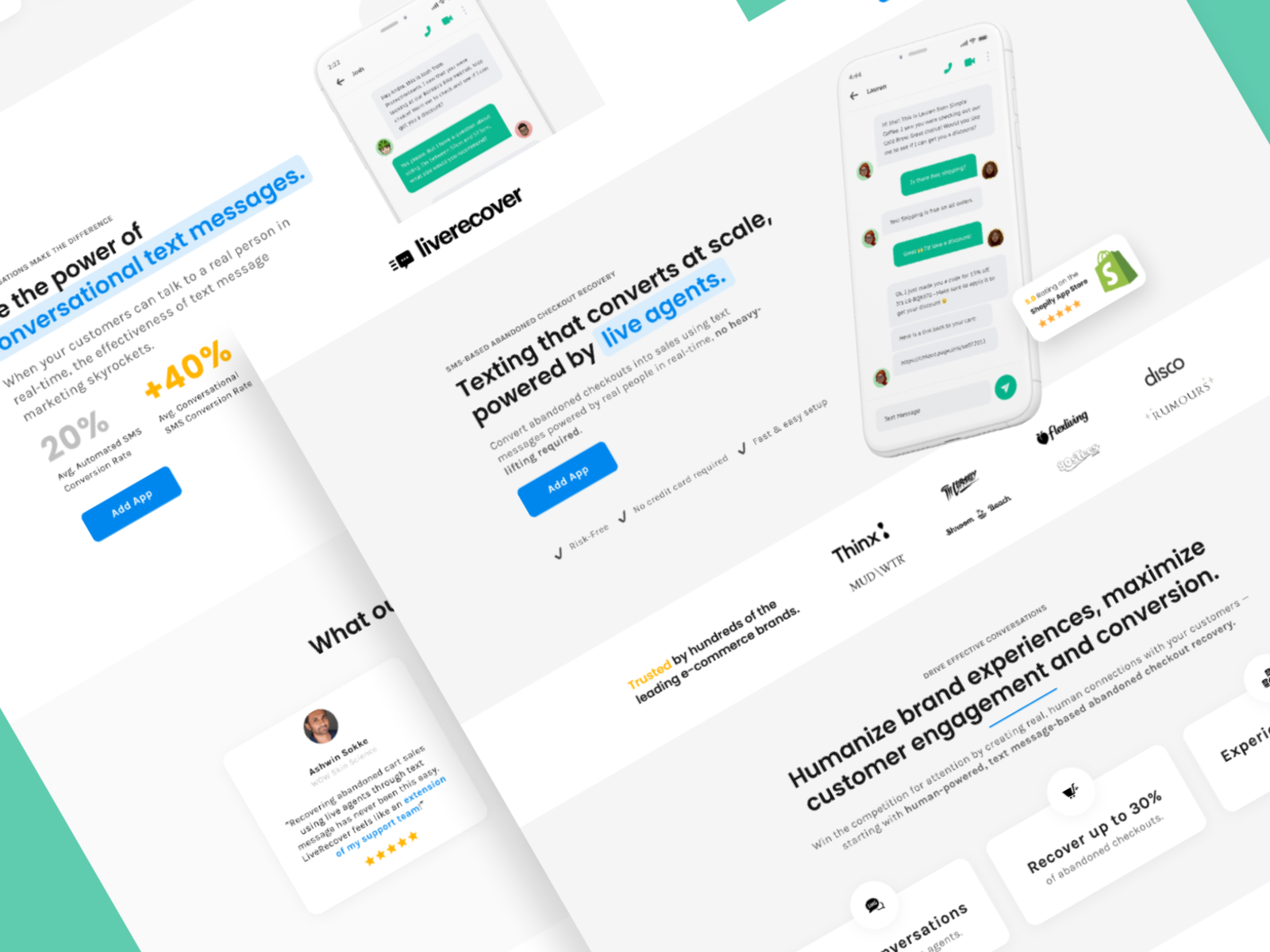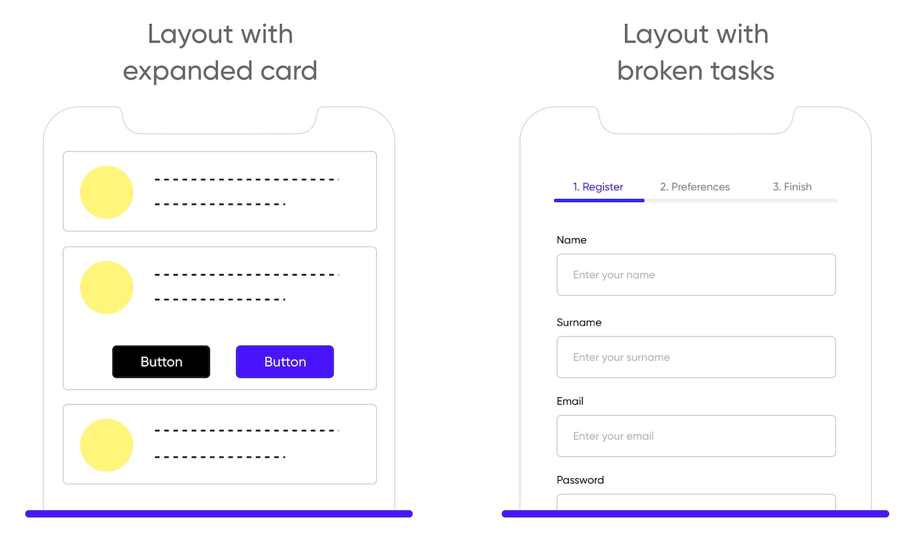75% of users never go further than the first page of SERPs (search engine result pages).
This means that if you’re not on that first page, the chances of someone clicking on your website decreases significantly. And, that’s bad news for your business goals.
Is this fact making you nervous?
There’s no need to worry!
This is where website optimization comes in.
With website optimization, you can attract better traffic and more conversions to your web page.
Now, let’s discuss our 3 best ways to optimize your website and boost your search engine ranking.
Get brand new conversion strategies straight to your inbox every week. 23,739 people already are!
What is website optimization?
Website optimization is all about the best techniques to acquire traffic, engage visitors, and make them convert to your goal.
Traffic can come from avenues like search engine optimization (SEO) and organic search, paid search (i.e. Google Ads, Facebook Ads, etc.), website referrals.
It’s important to make sure you’re getting enough traffic but also the right kind of traffic to your site. If you can do those two things, you’re already on the right path to improving your conversion rate and consequently, your website optimization.
Once you’ve figured out your traffic, conversion rate optimization (CRO) comes next. You should aim to create landing pages with high-quality content, including strong call-to-actions (CTAs), good copywriting, and social proof (i.e. case studies).

Website optimization is making sure you get as much of the right traffic to your site as possible, engaging the visitors in your products or services once they arrive, and ultimately persuading them to convert to your offer.
Why should I optimize my website?
Traffic leads to conversions, and conversions lead to money for your business.
If there’s no traffic going to your website, you won’t receive any conversions, and you won’t make money.
If there’s traffic going to your website, but you’re not receiving any conversions, you won’t make money either.
If you are getting traffic and you are getting traffic, website optimization will help you get more traffic and more conversions.
Website optimization should always be done if you want to make your website the absolute best it can be.
How can I optimize my website?
There are many ways to optimize your website, but these are our top 3 tips:
- Prioritize optimization for mobile first
- Improve your SEO
- Focus on user experience
1. Prioritize optimization for mobile first
Mobile has significantly changed the way website visitors interact with your company, especially when it comes to shopping for products and services.
Here are some ways you can optimize your website for mobile traffic.
Responsive design
Responsive design is a graphic user interface (GUI) design approach used to create content that adjusts smoothly to various screen sizes.
This approach to design is incredibly important for designing across multiple platforms.
Most of the time, we’re designing for desktop first and then translating that design for mobile use, when we should be designing with mobile at the forefront of our minds and figuring out the desktop translation afterward.
Take a look at the following statistics:
- 74% of smartphone users have used their phones to make purchases
- 85% of adults think that a company’s mobile website should be as good or better than their desktop website
- 57% of users say they won’t recommend a business with a poorly designed mobile site
Let’s put these statistics into perspective.
3 in 4 prospective customers use their mobile devices to buy products or services.
Almost 9 in 10 prospective customers think your mobile website should be as good as or better than the desktop version of your website.
Out of 100 prospective customers, more than half wouldn’t recommend your business if your mobile website is poorly designed.
If you’re not designing for mobile traffic first, not only will you possibly lose out on half of your referrals, prospective customers may not even bother to buy from your business in the first place.
Did these numbers blow your mind? Read more mobile statistics here.
Tips for mobile-friendly designing
Here are some techniques to keep in mind as you design for mobile:
Make main actions accessible
Accessibility is a staple of usability.
Everyone holds their phone differently, so it’s important to understand how users physically interact with their mobile devices, in addition to how they interact with your website.
Avoid extensive scrolling
It is natural for users to scroll.
However in some cases, especially when users are prompted to complete tasks, users can become frustrated and lose interest if they have to scroll too much. A great way to keep users engaged is to expand tasks when necessary or break down tasks into parts.

Design finger-friendly buttons
On mobile devices, buttons can be very small which makes them hard to spot and even hard to tap.
In fact, it’s a lot harder to select things on mobile with a finger than on desktop with a mouse. To make buttons easier to see and tap, create controls that measure at least 10–22 mm (40px).
2. Improve your search engine optimization (SEO)
As we briefly discussed before, SEO is directly linked to your traffic. So, SEO is easily one of the biggest ways to improve your website and page optimization.
To improve your SEO, you can focus on these three areas:
- On-page SEO
- Off-page SEO
- Technical SEO
New to SEO? Read this to learn all about how to do SEO from scratch and this for our best SEO audit tips to boost your ranking.
On-page SEO
On-page SEO is the process of optimizing your website content. This may be copy, keywords, metadata, images, etc.
Tips for on-page SEO can include:
- doing keyword research
- optimizing metadata
- prioritizing internal linking
Keyword research comes in handy for your ranking on search engines. Doing keyword research about what terms have high relevance to your business as well as high search volume, will help put you ahead of the competition.
Metadata tells users about your page. You’ll want to include relevant terms and phrases in your metadata to help your website’s ranking. Here are tips for optimizing metadata for your titles, meta descriptions, and images.
Internal linking can better help search engines algorithms understand your site, which makes it more user-friendly.
With testing tools like Ahrefs, you can run site audits that will alert you of HTML tag errors and other on-page SEO errors.
Off-page SEO
Off-page SEO relates to everything that doesn’t directly happen on your website. And since we’re talking about website optimization, we won’t spend too much time here.
Link-building, also known as backlinks, is the practice of getting other reputable websites to link back to your site.
This can also help your search engine ranking, as search engines see this as proof of your value to outside users.
Need help with link-building? We’ve got you covered.
Technical SEO
Technical SEO is about actions you can take that help search engines look through your website and enhance user experience.
An example of technical SEO is website speed or page speed.
Slow page load time or page load speed can be detrimental to the performance of your website.
Just take a look at these numbers:
- Some 45% of people are less likely to make a purchase when an eCommerce site loads slower than expected
- Pages that load within two seconds have an average bounce rate of 9%, while pages that take five seconds to load have a bounce rate of 38%
- A one-second delay in mobile load times can impact conversion rates by up to 20%
With these statistics, it’s easy to see why your site optimization can heavily depend on small but mighty technical factors like site speed.
SEO Tools
It can be difficult to keep track of SEO metrics like rankings and keywords.

Some common website optimization tools for SEO are GTmetrix, Google Search Console, and Crazy Egg. While these tools can’t do everything for you, they can help you with certain tasks like keyword research and analyzing competitor pages, which make them great tools for SEO.
Check out more expert SEO tools here.
3. Focus on user experience
Forrester reported that improving user experience (UX) design can potentially increase conversion rates by as much as 400%.
And when it comes to UX design, usability is king.
Usability
Usability is how easy something is to use, based on the discoverability and understanding of its features.
When you’re ready to test changes to your website, you can use A/B testing to figure out what actually works for your target audience.
Designers and strategists don't have to test ideas randomly to figure out what works best, and neither do you. You can use data derived from user behavior to improve your website.
A good way to find data about user behavior is to use heatmaps.
Heatmaps are a strong data visualization tool to discover what your users are doing when they’re visiting your landing page. Read more about how to use heatmaps to understand user behavior here.
Pair Strategy 1, mobile optimization, with a focus on user experience and your conversion rates will be heading up in no time.
Learn more about how UX and CRO work together to improve your conversions.
Time to start optimizing
We’ve talked about a lot in this article.
The most important insight to take away from this article is that website optimization will help your search engine ranking, which means more traffic, more conversions, and more money for you.
Website optimization can be really difficult, even for the pros, so it’s okay if you’re not an expert overnight.